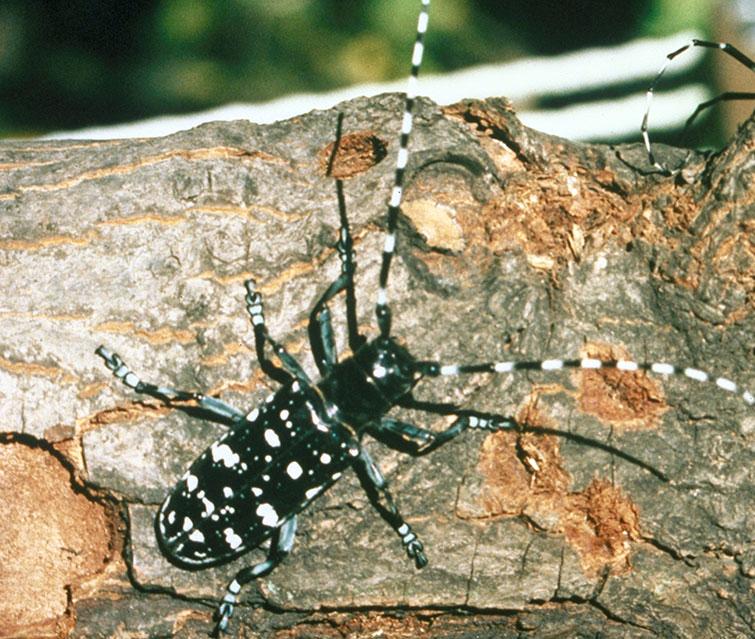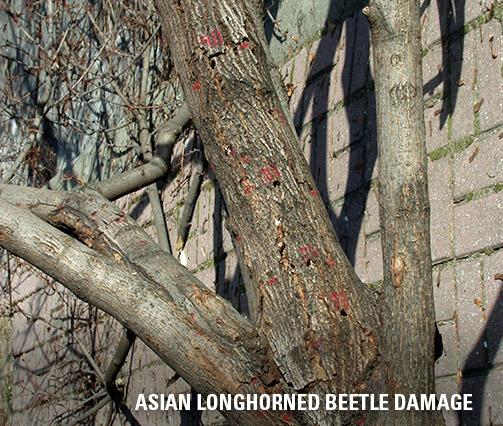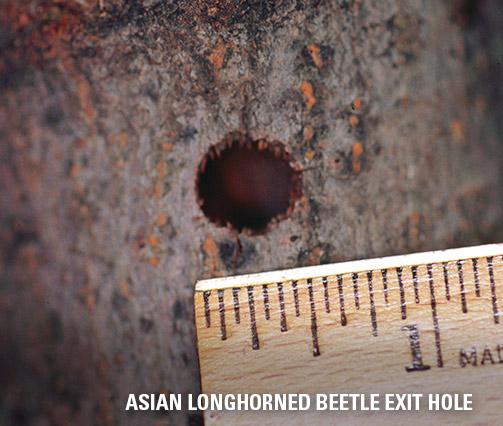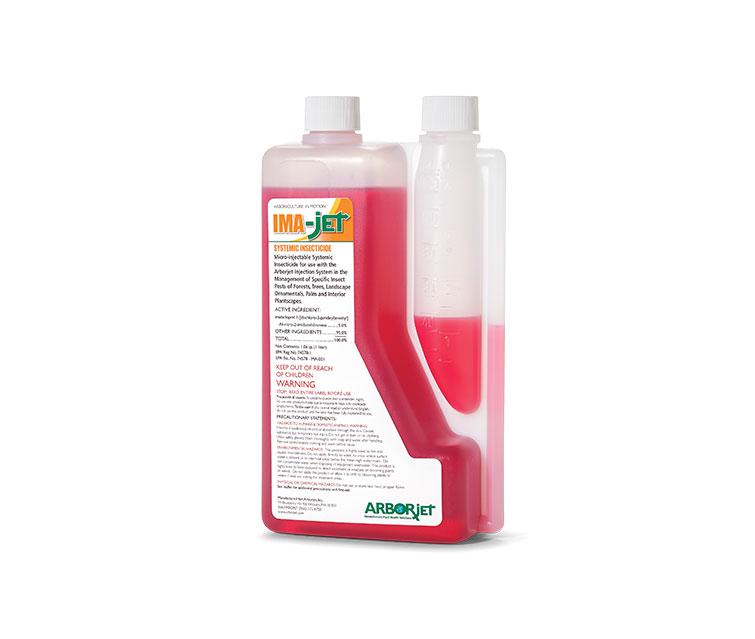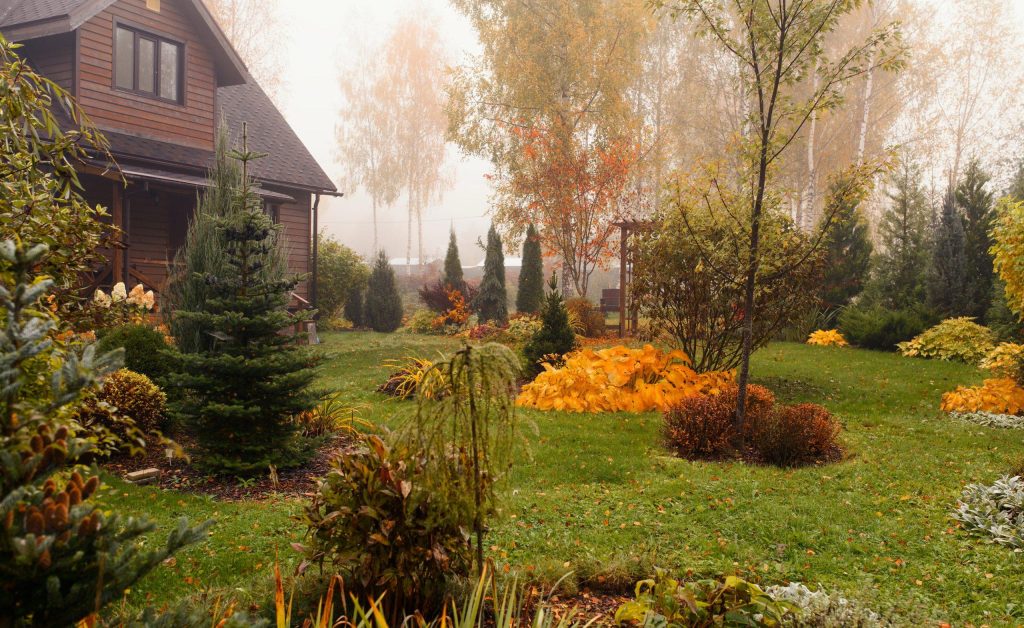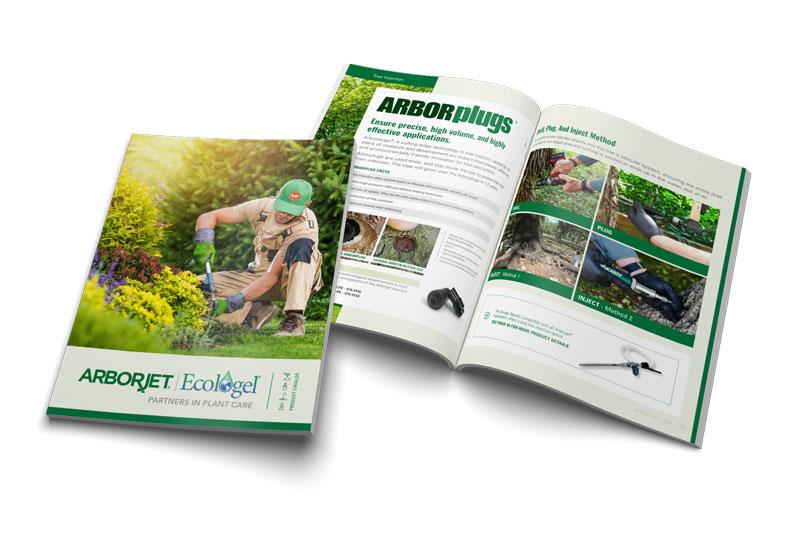Asian Longhorned Beetle
The Asian Longhorned Beetle (ALB, Anoplophora glabripennis) is an invasive, wood boring insect introduced to the U.S. via packing materials. ALB is a member of the Cerambycidae family that primarily attacks maple trees, but it also feeds on many other types of hardwood trees.
The adults are large, black beetles, approximately 1 – 1 1/2 inches long with irregular white spotting on their wing covers and very long, black and white striped antennae. On the male, the length of the antennae can be up to twice the length of their body. The larva is cream colored, grub-like, approximately 1-2 inches long when mature. This horned beetle has been identified in NY, NJ, IL, MA, OH, and SC.
Common Symptoms
Symptoms of ALB infestation is similar to symptoms of many pest infestations, including yellowing leaves, and dieback of branches. Specific signs include bleeding wounds in the trunk or large limb bark, indicating oviposition of eggs. There may also be large (3/8 inch) sized, perfectly circular holes in the trunk or large limbs and frass (sawdust) on the ground near the holes. The beetles themselves may also be visible during mid to late summer months, feeding in the canopy.
Treatments
Because the Asian Longhorned Beetle bores into the sapwood of the tree, it can be most effectively controlled with IMA-jet®, which is labeled for use against Asian Longhorned Beetle under USDA supervision only. For insect control, this product must be placed into the tree’s sapwood, the conductive tissue that moves water to the canopy.
When To Treat
For optimum results, apply IMA-jet prior to infestation. Also apply when insects are infesting and feeding upon the tree. IMA-jet insecticide moves upward into the tree’s canopy from the application sites. Systemic activity occurs only after the active ingredient is translocated upward in the tree. This product must be applied under the bark into the sapwood (i.e., the vascular) tissues. In the case of severe infestation, use the highest label rate for the targeted pest. In trees larger than 24 inches use the highest rate listed for that insect pest. The need for an application can be based on historical monitoring of the site, previous records or experiences, current season adult trapping and other methods., Do not apply to trees stressed by drought or extreme heat, due to slow uptake and potential for foliar injury.
What To Expect After Treatment
Dosages are designed for insect control and retreatment is generally not necessary during the year after initial treatment. Monitor insect activity to establish a damage threshold for retreatment. Repeat applications as necessary.
References And Photo Credits
Adult Beetle by Kenneth R. Law, USDA APHIS PPQ, Bugwood.org
Beetle Larvae taken by Steven Katovich, USDA Forest Service, Bugwood.org
Beetle Damage taken by Thomas B. Denholm, New Jersey Department of Agriculture, Bugwood.org
Beetle Exit Hole taken by Dennis Haugen, USDA Forest Service, Bugwood.org

